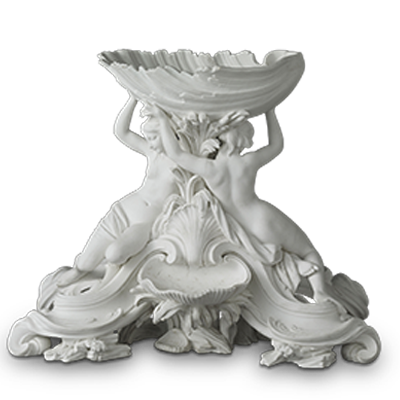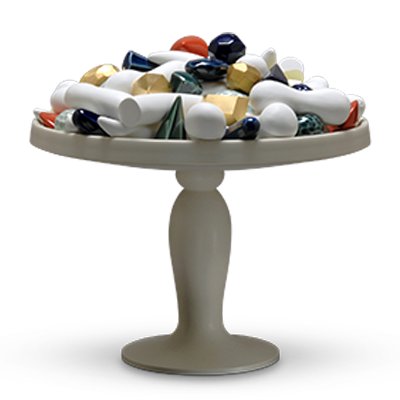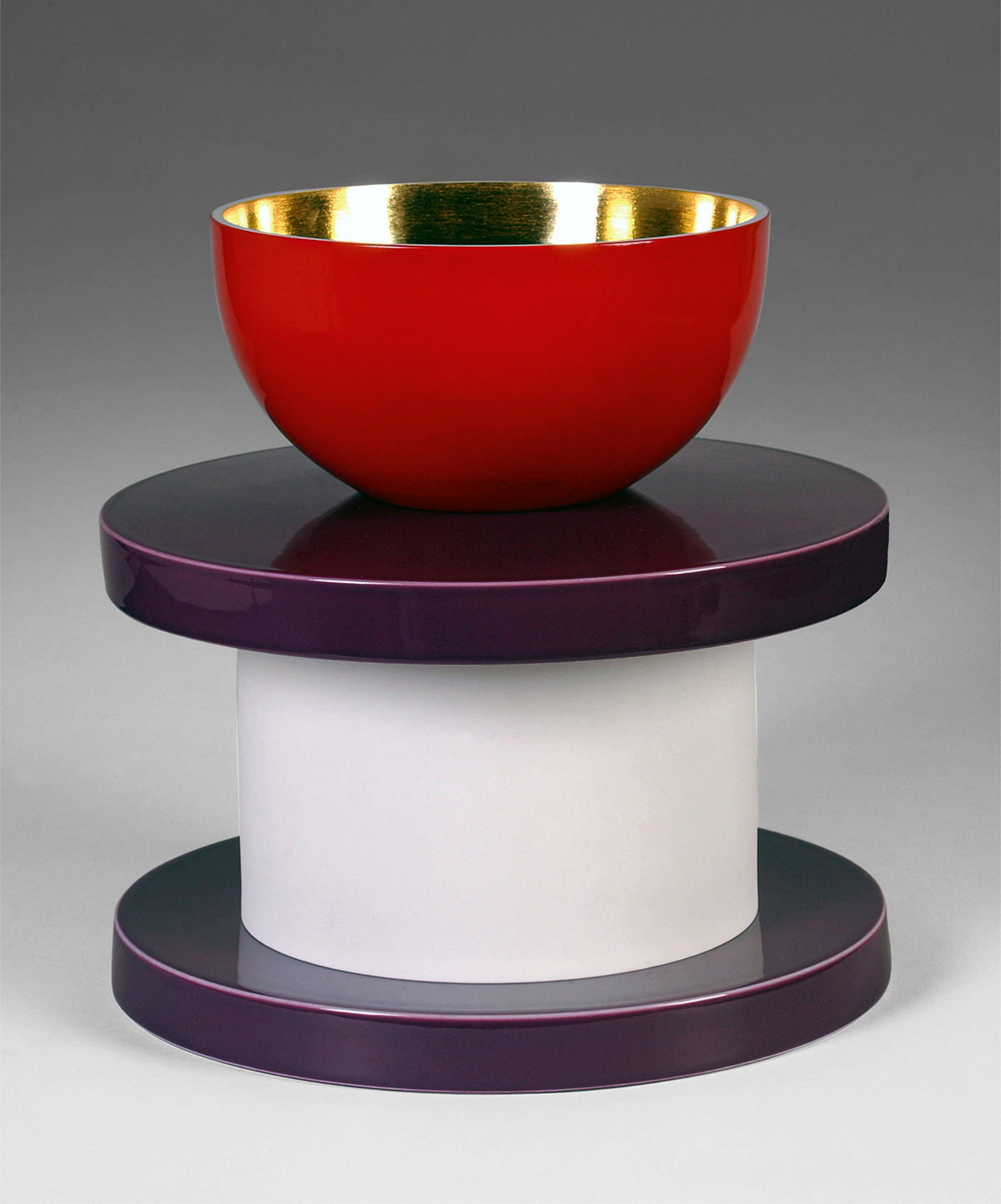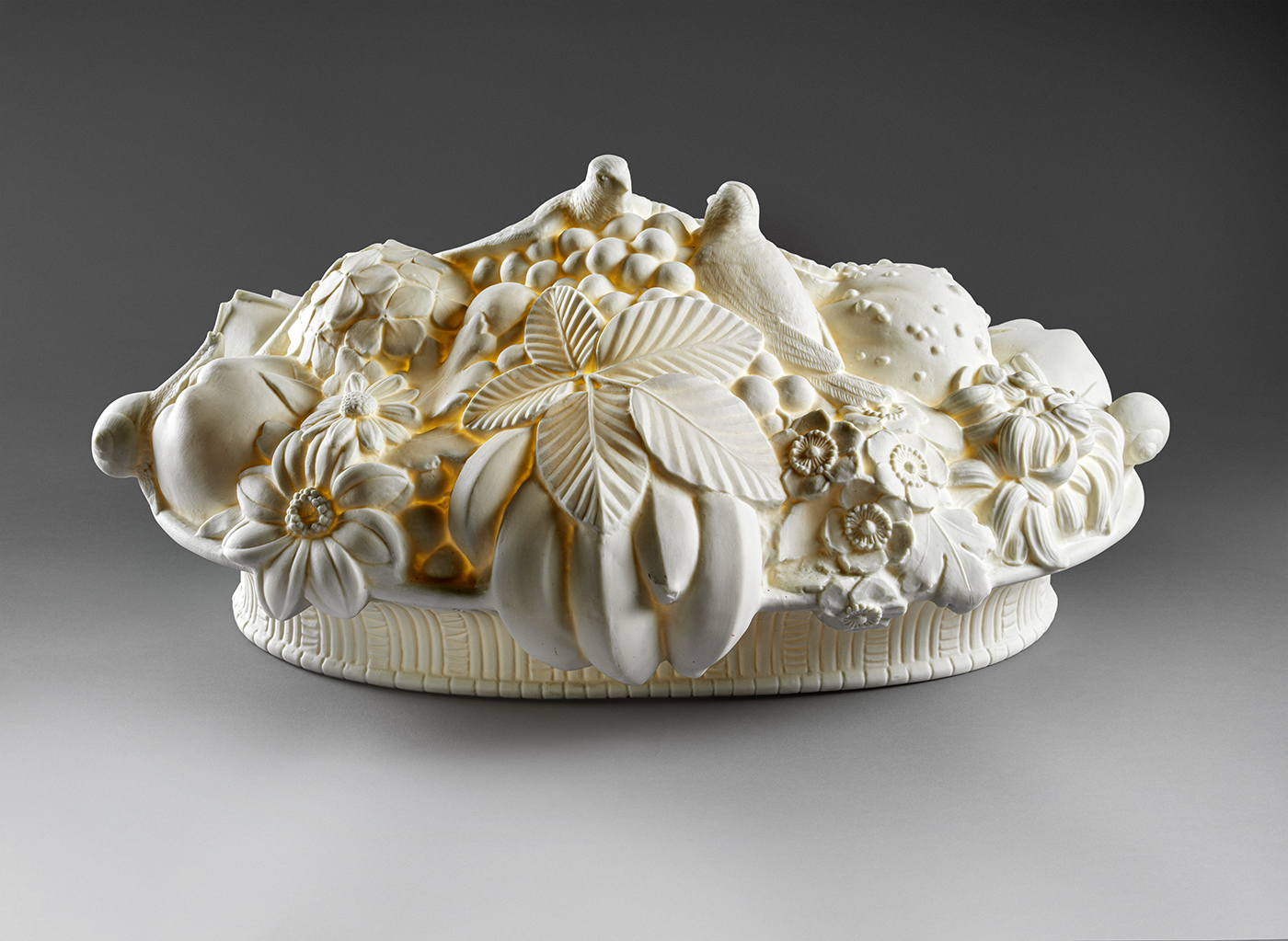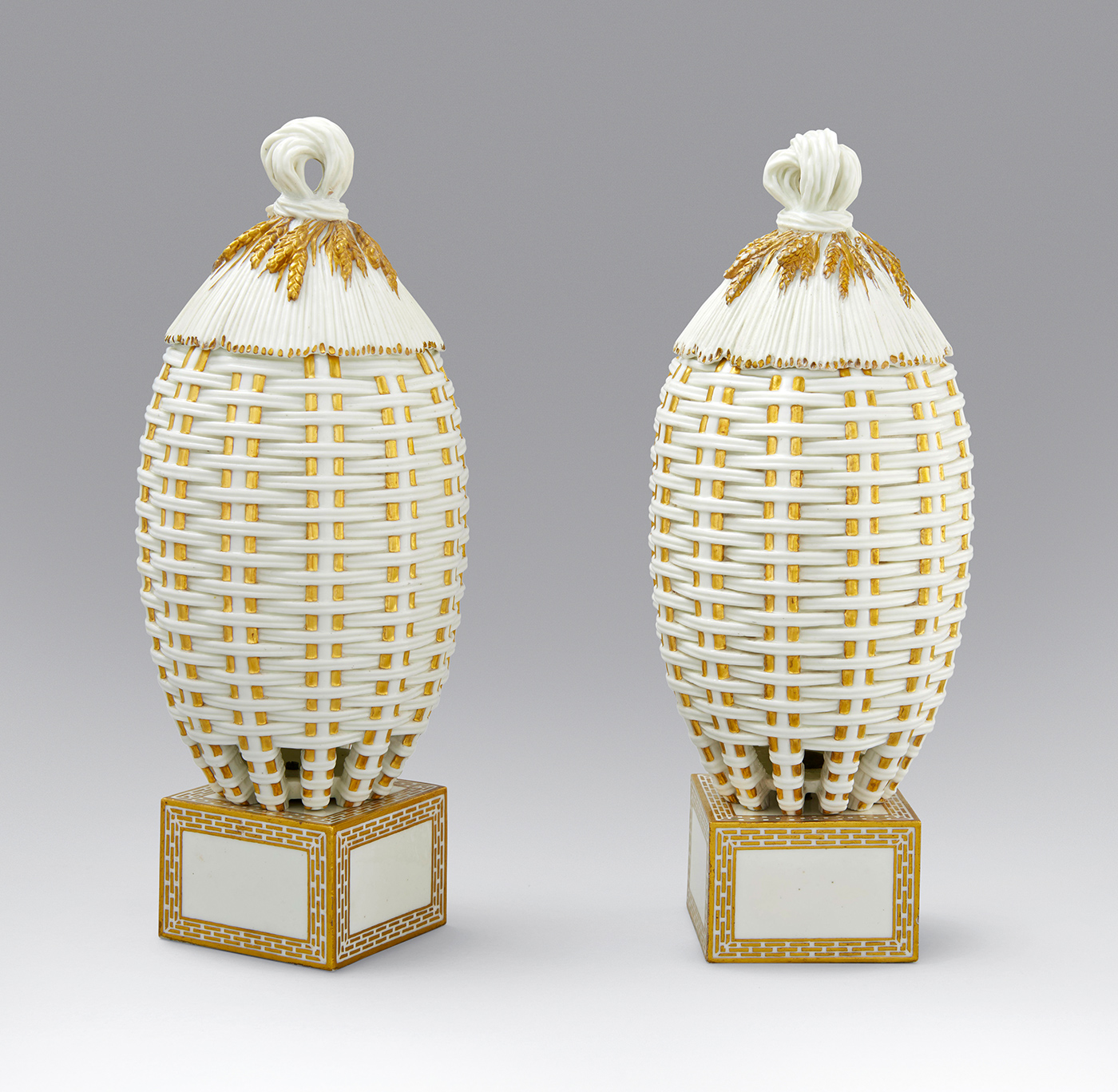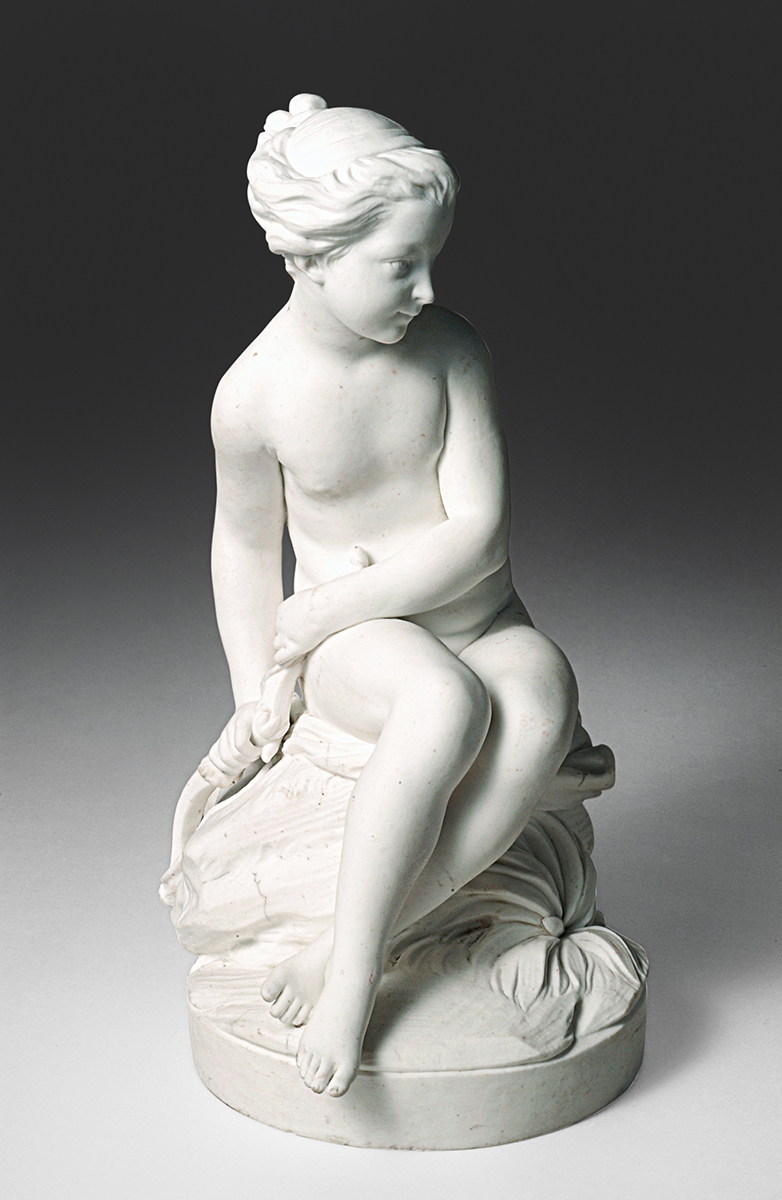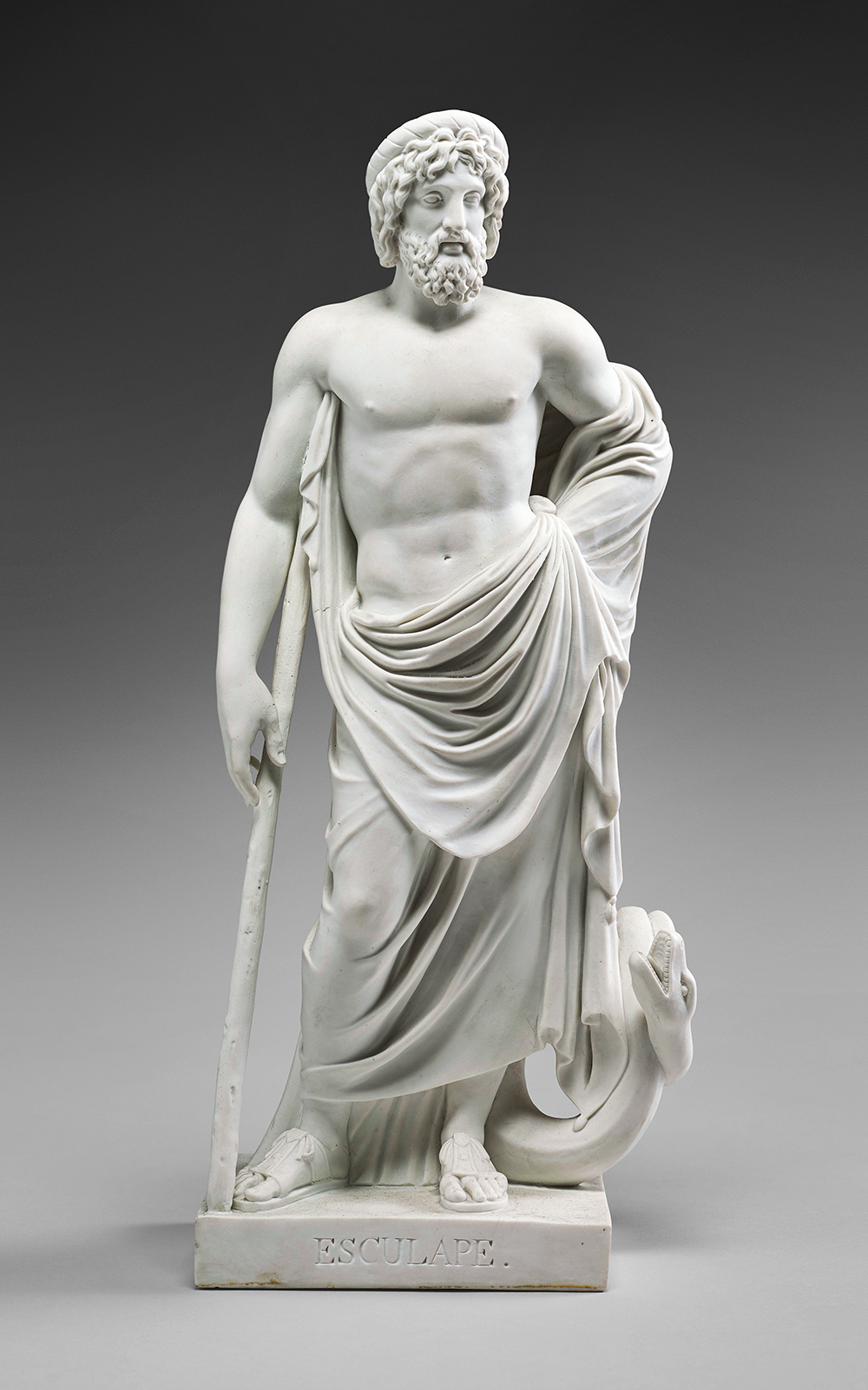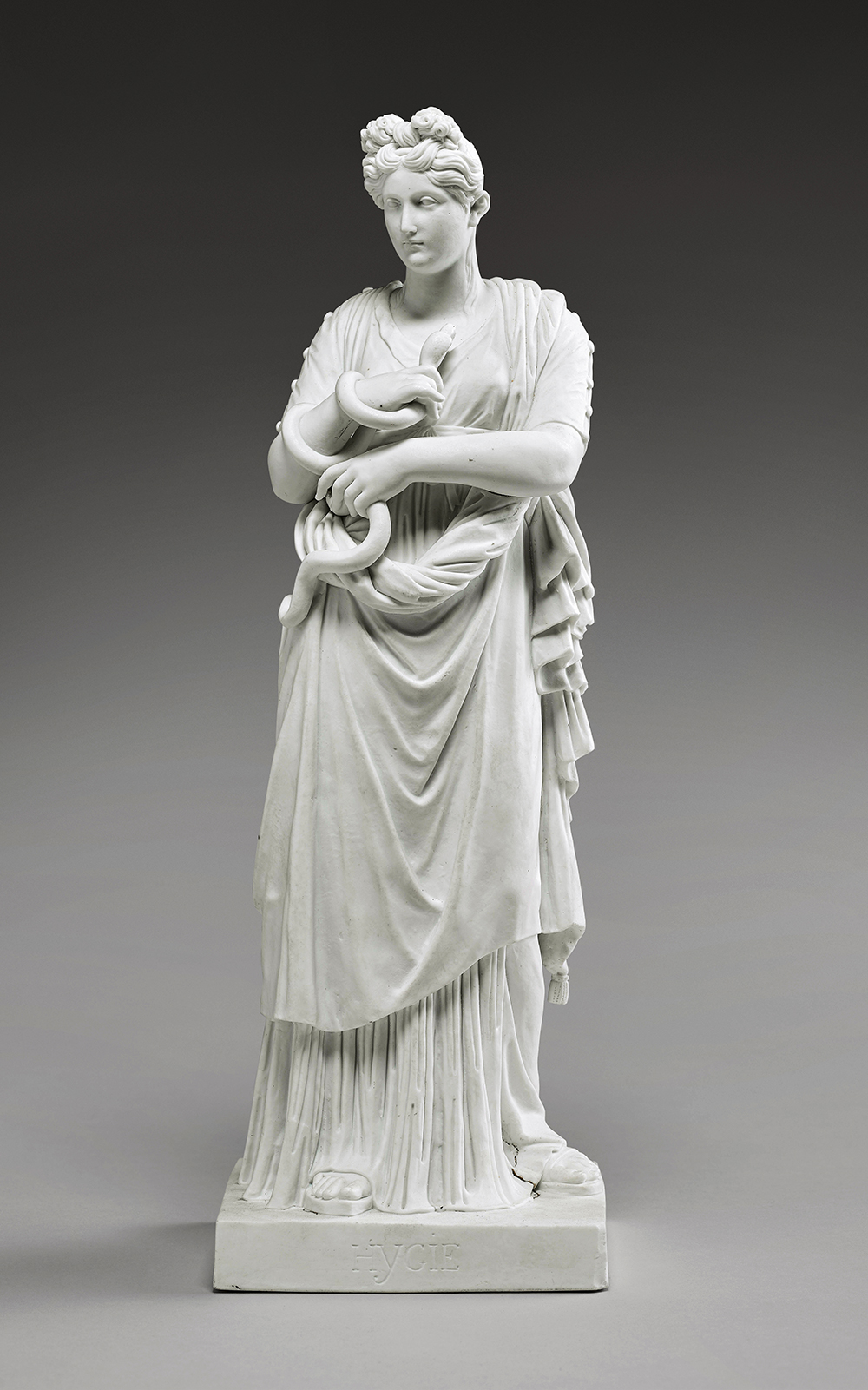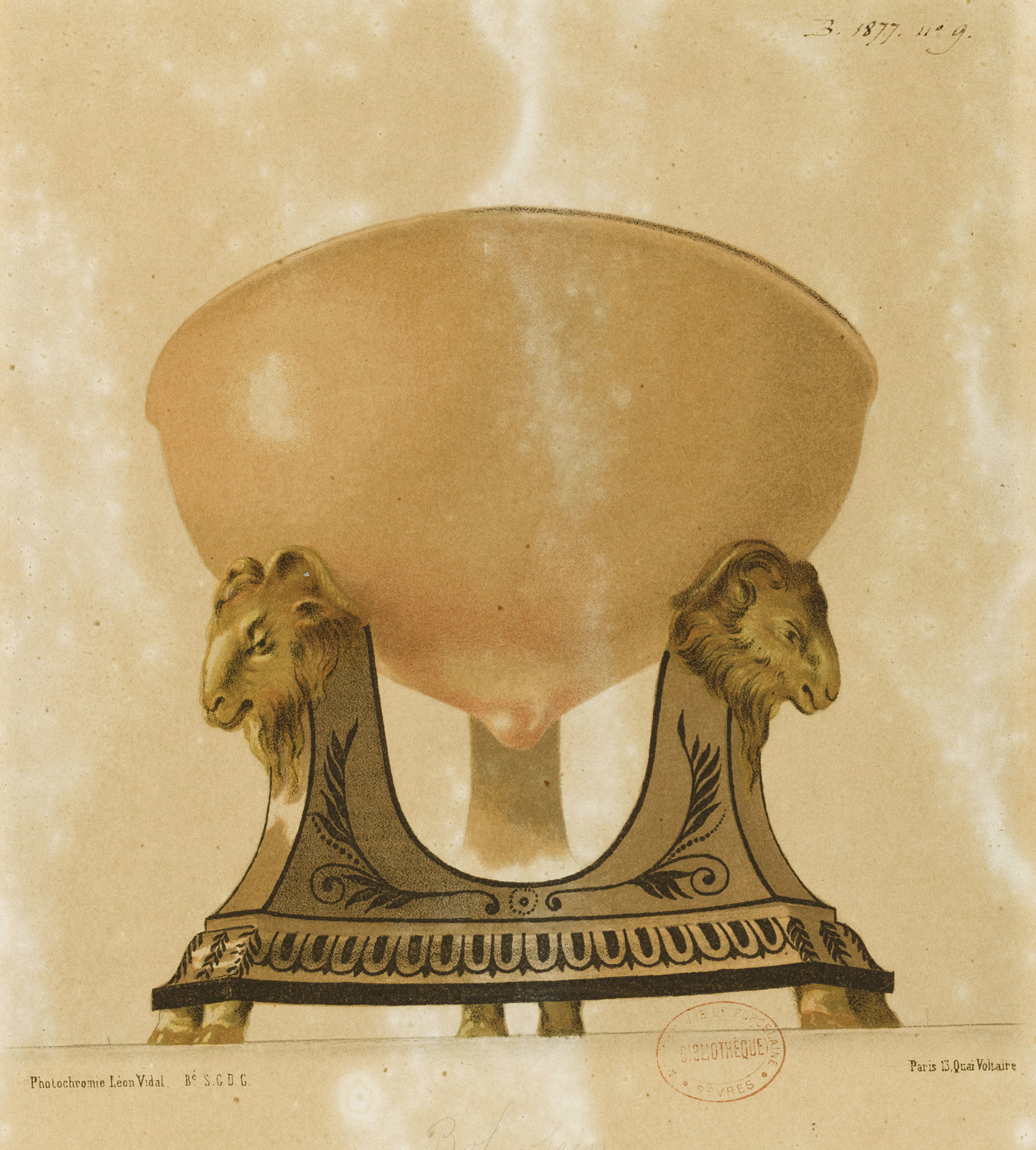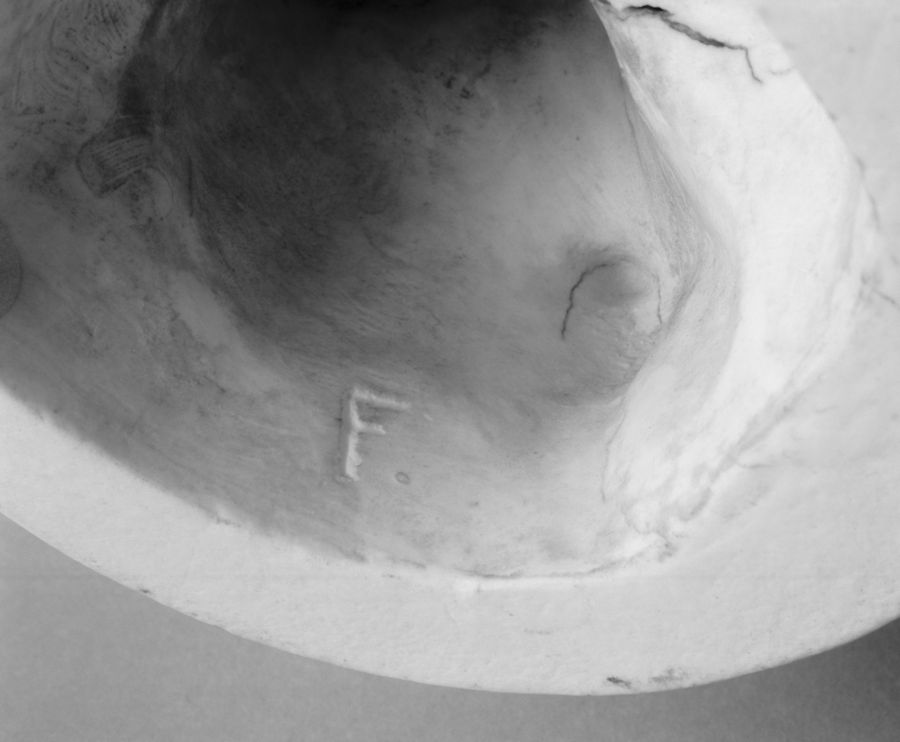Art Nouveau
In 1891 Émile Baumgart (1843–1908) became the new director of the Sèvres Manufactory. He appointed Alexandre Sandier (1843–1916), a well respected interior designer and architect, as director of artworks in 1897, just in time to put in motion an ambitious program. For the 1900 Exposition Universelle in Paris, the Sèvres Manufactory created a series of works in the flourishing Art Nouveau fashion, a highly ornamental style inspired by botanical forms. Shapes and decorations changed markedly as a result of intense experimentation. New sculptures featured sinuous lines and curling leaves and stems, conveying new growth and dynamic movement.
In a period particularly rich with technical innovations, the artists took advantage of the variety of materials available. When Sèvres director Charles Lauth (1865–1922) and chemist Georges Vogt (1843–1909) invented pâte nouvelle, a “new paste” with superior plasticity and fire resistance, they warned of a curious side effect: iridescent crystals might appear on the objects’ surface because traces of certain metals were left in the paste. However, this technical flaw resonated with the aesthetics of Art Nouveau and was quickly embraced. Sandier also promoted creations in grès cérame, a type of stoneware suitable for monumental architectural works, such as the entrance door of the Sèvres Pavilion at the 1900 Exposition Universelle.
Baumgart’s policy was rewarded with strong commercial success, enhanced collaboration with contemporary artists, and the loan of a large selection of the manufactory’s works to the recently founded Musée des Arts décoratifs in Paris.
Art Nouveau
In 1891 Émile Baumgart (1843–1908) became the new director of the Sèvres Manufactory. He appointed Alexandre Sandier (1843–1916), a well respected interior designer and architect, as director of artworks in 1897, just in time to put in motion an ambitious program. For the 1900 Exposition Universelle in Paris, the Sèvres Manufactory created a series of works in the flourishing Art Nouveau fashion, a highly ornamental style inspired by botanical forms. Shapes and decorations changed markedly as a result of intense experimentation. New sculptures featured sinuous lines and curling leaves and stems, conveying new growth and dynamic movement.
In a period particularly rich with technical innovations, the artists took advantage of the variety of materials available. When Sèvres director Charles Lauth (1865–1922) and chemist Georges Vogt (1843–1909) invented pâte nouvelle, a “new paste” with superior plasticity and fire resistance, they warned of a curious side effect: iridescent crystals might appear on the objects’ surface because traces of certain metals were left in the paste. However, this technical flaw resonated with the aesthetics of Art Nouveau and was quickly embraced. Sandier also promoted creations in grès cérame, a type of stoneware suitable for monumental architectural works, such as the entrance door of the Sèvres Pavilion at the 1900 Exposition Universelle.
Baumgart’s policy was rewarded with strong commercial success, enhanced collaboration with contemporary artists, and the loan of a large selection of the manufactory’s works to the recently founded Musée des Arts décoratifs in Paris.
In 1891 Émile Baumgart (1843–1908) became the new director of the Sèvres Manufactory. He appointed Alexandre Sandier (1843–1916), a well respected interior designer and architect, as director of artworks in 1897, just in time to put in motion an ambitious program. For the 1900 Exposition Universelle in Paris, the Sèvres Manufactory created a series of works in the flourishing Art Nouveau fashion, a highly ornamental style inspired by botanical forms. Shapes and decorations changed markedly as a result of intense experimentation. New sculptures featured sinuous lines and curling leaves and stems, conveying new growth and dynamic movement.
In a period particularly rich with technical innovations, the artists took advantage of the variety of materials available. When Sèvres director Charles Lauth (1865–1922) and chemist Georges Vogt (1843–1909) invented pâte nouvelle, a “new paste” with superior plasticity and fire resistance, they warned of a curious side effect: iridescent crystals might appear on the objects’ surface because traces of certain metals were left in the paste. However, this technical flaw resonated with the aesthetics of Art Nouveau and was quickly embraced. Sandier also promoted creations in grès cérame, a type of stoneware suitable for monumental architectural works, such as the entrance door of the Sèvres Pavilion at the 1900 Exposition Universelle.
Baumgart’s policy was rewarded with strong commercial success, enhanced collaboration with contemporary artists, and the loan of a large selection of the manufactory’s works to the recently founded Musée des Arts décoratifs in Paris.
Nature in Art Nouveau
Nature has informed both the shape of this Art Nouveau vase and its ornament. Its bulbous form comes from a drawing made by an unknown teacher at the famed École Guérin (Guérin School). The school taught art through the close observation of plants, from the reproduction of their exact appearance to their purest stylization. The vegetal decoration was created in 1903 by Édouard Ballanger, who painted it on the porcelain himself.
The name of this vase shape, Les Pommerets, was given by Alexandre Sandier (worked at Sèvres, 1897–1918), the director of artworks at the Sèvres Manufactory, and refers to a town in his native Burgundy. A few Vases des Pommerets were exhibited at the 1900 Exposition Universelle in Paris.
Nature has informed both the shape of this Art Nouveau vase and its ornament. Its bulbous form comes from a drawing made by an unknown teacher at the famed École Guérin (Guérin School). The school taught art through the close observation of plants, from the reproduction of their exact appearance to their purest stylization. The vegetal decoration was created in 1903 by Édouard Ballanger, who painted it on the porcelain himself.
The name of this vase shape, Les Pommerets, was given by Alexandre Sandier (worked at Sèvres, 1897–1918), the director of artworks at the Sèvres Manufactory, and refers to a town in his native Burgundy. A few Vases des Pommerets were exhibited at the 1900 Exposition Universelle in Paris.
Gouache and graphite on paper
Manufacture et Musée nationaux, Sèvres, MNS E.1908.354
Photo © Sèvres – Manufacture et musée nationaux, Dist. RMN-Grand Palais / Le Studio Numérique
Glazed and decorated hard-paste porcelain with reliefs
Manufacture et Musée nationaux, Sèvres, MNC 15884
Photo © RMN-Grand Palais (Sèvres – Manufacture et musée nationaux) / Martine Beck-Coppola


Gouache and graphite on paper
Manufacture et Musée nationaux, Sèvres, MNS E.1908.354
Photo © Sèvres – Manufacture et musée nationaux, Dist. RMN-Grand Palais / Le Studio Numérique
Glazed and decorated hard-paste porcelain with reliefs
Manufacture et Musée nationaux, Sèvres, MNC 15884
Photo © RMN-Grand Palais (Sèvres – Manufacture et musée nationaux) / Martine Beck-Coppola
Hector Guimard
Architect Hector Guimard (1867–1942)— renowned for his sprouting, botanical designs for the Paris Métro—coined a phrase that speaks volumes about Art Nouveau’s approach to design: “Reject the flower, seize the stem!” This monumental vase “seizes the stem,” producing a rhythmic, architectural order through the twining tendrils of growing plants. The sparkling iridescence of the vase’s surface is a side effect of the crystalline glaze, also created at Sèvres.
Architect Hector Guimard (1867–1942)— renowned for his sprouting, botanical designs for the Paris Métro—coined a phrase that speaks volumes about Art Nouveau’s approach to design: “Reject the flower, seize the stem!” This monumental vase “seizes the stem,” producing a rhythmic, architectural order through the twining tendrils of growing plants. The sparkling iridescence of the vase’s surface is a side effect of the crystalline glaze, also created at Sèvres.
Glazed and decorated stoneware
Manufacture et Musée nationaux, Sèvres, MNS 2000.D.1
Photo © RMN-Grand Palais (Sèvres – Manufacture et musée nationaux) / Tony Querrec

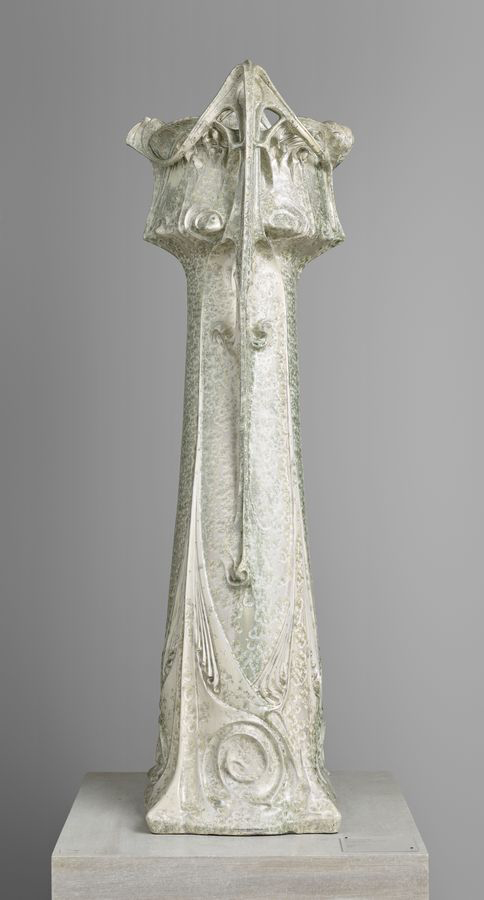
Glazed and decorated stoneware
Manufacture et Musée nationaux, Sèvres, MNS 2000.D.1
Photo © RMN-Grand Palais (Sèvres – Manufacture et musée nationaux) / Tony Querrec
Jump to:


